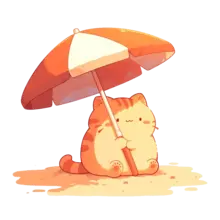Reviewed by: Max Cho, Licensed Insurance Broker NPN 20377411
Types of Car Insurance: Minimum Required Insurance / Liability Coverage / Uninsured Motorist / Collision / Comprehensive / PIP / MedPay
Minimum liability coverage requirements
Liability coverage comes in the forms of Bodily Injury liability insurance and Property Damage liability insurance. In each state (see below) there is a minimum legal requirement for each of these coverages, however you should buy more than the minimum if you can afford it.
As a reminder, liability insurance doesn’t cover you, your passengers, or your car. It protects others when you cause a crash. In “no fault” states, your insurance protects you and your car.
If you have a very high net worth, more than $1M including your home, you’ll want to consider secondary liability insurance called Umbrella insurance. Typically umbrella policies require you to increase your liability coverage to a certain minimum, such as 100/300 or 250/500 and maintain at least $300,000 in personal liability coverage for any properties you rent or own.
Additional car insurance requirements
Many states require additional insurance beyond just liability insurance. For a variety of reasons, states require drivers to have different kinds of insurance. These required car insurance types include Uninsured/Underinsured Motorist (UI/UIM), Personal Injury Projection (PIP), and Medical Payments Coverage (MedPay).
Uninsured & Underinsured Motorist (UI/UIM)
UI/UIM is car insurance coverage that protects you in a crash if the other driver doesn’t have enough insurance to cover your bills. The portion of drivers who are uninsured varies by state from 3% in New Jersey to 29% in Mississippi.
UI/UIM is required in the following states: Connecticut, Illinois, Kansas, Maine, Maryland, Massachusetts, Minnesota, Missouri, Nebraska, New Hampshire (if you have car insurance), New York, North Carolina, North Dakota, Oregon, Pennsylvania, South Carolina, South Dakota, Vermont, Virginia (if you have car insurance), Washington D.C., West Virginia, and Wisconsin.
Even if your state doesn’t require UI/UIM, it’s usually a good idea. See if UI/UIM is right for you.
Personal Injury Protection (PIP)
PIP is car insurance that pays for your own medical care, lost wages, and related expenses if you’re in an accident, regardless of who was at fault (in fact, it’s commonly called “no fault insurance”). There are 12 “no fault” states and PIP is required in all of them, although three states allow drivers to choose between PIP and a more expensive “at fault” policy. Finally, a few states require insurers to offer PIP as an add-o even though they’re “at fault” states.
PIP is required in the following states: Delaware, Florida, Hawaii, Kansas, Massachusetts, Michigan, Minnesota, New Jersey, New York, North Dakota, Oregon, and Utah.
Medical Payments Coverage (MedPay)
MedPay is similar to PIP, but while the coverage areas overlap a bit, MedPay typically has lower coverage limits and doesn’t cover as many expenses, like rehabilitation, child care, and lost wages. It can act as a PIP supplement if PIP limits are reached but they don’t cover all expenses incurred in a crash. MedPay is also only required in a handful of states.
MedPay is required in the following states: Maine, New Hampshire (if you have car insurance) and Pennsylvania.
Why the minimum probably isn't enough
Each state sets their own minimum requirements for liability coverage limits for car insurance. The specifics vary depending on whether you live in an “at fault” state vs a “no fault” state and the requirements vary substantially from state to state.
While state legislatures are thinking about the needs of your state’s entire driving population, you need to be concerned with your own needs. The government needs to balance everyone’s income and everyone’s assets to find reasonable requirements that work broadly.
A quick reminder, liability insurance limits are typically written like this: 30/60/25 or 25/50 where the first two numbers refer to bodily injury liability (per person and per accident if multiple people are injured) while the third number, when present, refers to property damage liability.
According to data from the Insurance Information Institute, some states seem to have a better grasp on what car accidents actually cost but other states will let you be underinsured.
California, New Jersey, and Pennsylvania, for example, only require 15/30/5 coverage. If you live in California the minimum is definitely not enough coverage for more than a fender-bender. New Jersey and Pennsylvania are both “no fault” states and thus also require Personal Injury Protection, and New Jersey requires Uninsured/Underinsured Motorist coverage.
Alaska and Maine, on the other hand, are not messing around. They both require 50/100/25. This seems like it could be enough coverage for most crashes, but still not enough to cover a bad one. Maine also requires Uninsured/Underinsured Motorist (UI/UIM) and Medical Payments coverage (MedPay).
Explore your own state’s requirements and weigh whether or not you think it’s enough for you.
If you have assets (money or a house) to protect, we don’t think the state minimums are enough. Find out how much liability coverage you should have.
Car insurance requirements in each state
In slightly less than half the states, only liability insurance is required. In the other 27 states and Washington DC, additional insurances are required by law.
When you search for the minimum requirements in your state, you’re likely to see links on websites for insurance companies, financial information, and personal injury lawyers.
While these sites can provide important details and explanations, we always recommend checking with your state’s official insurance page for your legal requirements.
Here is a summary of additional coverage requirements by state and a link to an official state government web page or PDF to check for details. - Alabama : no additional requirements
- Alaska : no additional requirements
- Arizona : no additional requirements
- Arkansas : no additional requirements
- California : no additional requirements
- Colorado : no additional requirements
- Connecticut : UI/UIM is required
- Delaware : PIP is required
- Florida : PIP is required
- Georgia : no additional requirements
- Hawaii : PIP is required
- Idaho : no additional requirements
- Illinois : UI/UIM is required
- Indiana : no additional requirements
- Kansas : UI/UIM and PIP are required
- Kentucky : no additional requirements
- Louisiana : no additional requirements
- Maine : UI/UIM and MedPay are required
- Maryland : UI/UIM is required
- Massachusetts : UI/UIM and PIP are required
- Michigan : PIP is required and separate property damage requirements for inside and outside Michigan exist
- Minnesota : UI/UIM and PIP are required
- Mississippi : no additional requirements
- Missouri : UI/UIM is required
- Montana : no additional requirements
- Nebraska : UI/UIM is required
- Nevada : no additional requirements
- New Hampshire : if you have car insurance, UI/UIM and MedPay are required
- New Jersey : PIP is required
- New Mexico : no additional requirements
- New York : UI/UIM and PIP are required
- North Carolina : UI/UIM is required
- North Dakota : UI/UIM and PIP are required
- Ohio : no additional requirements
- Oklahoma : no additional requirements
- Oregon : UI/UIM and PIP are required
- Pennsylvania : UI/UIM and MedPay are required
- Rhode Island : no additional requirements
- South Carolina : UI/UIM is required
- South Dakota : UI/UIM is required
- Tennessee : no additional requirements
- Texas : no additional requirements
- Utah : PIP is required
- Vermont : UI/UIM is required
- Virginia : if you have car insurance, UI/UIM is required
- Washington : no additional requirements
- Washington DC : UI/UIM is required
- West Virginia : UI/UIM is required
- Wisconsin : UI/UIM is required
- Wyoming : no additional requirements

Want to find the best insurance? Need help?
Coverage Cat shops for you. We search across dozens of major insurers and use data science to compare millions of real quotes. The result? The best combination of policies, coverage, and price for your personal financial situation.
Our promise:
- We only share your information to get you quotes
- No unsolicited calls from us or other insurance agents
- As few emails as needed to find you the best insurance



